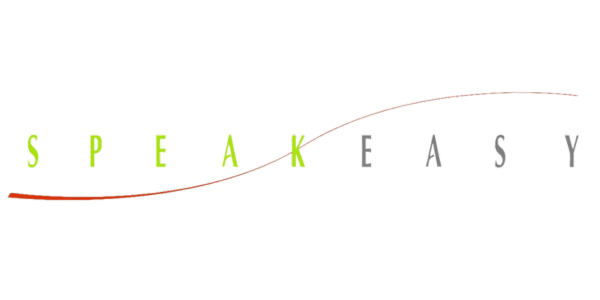
13 Nov 3 Examples of Effective Communication Training for Employees
Reading Time: 4 minutesThe ability to communicate clearly, empathetically, and persuasively is essential for building strong relationships, driving collaboration, and achieving business success. Recognizing the significance of communication in the workplace, many organizations invest in communication training programs to equip their employees with the necessary skills to excel in various professional settings. In this article, we will explore the importance of communication training for employees and provide three examples of effective communication training programs that can empower individuals to become exceptional communicators.
Why Do Employees Need Communication Training?
Effective communication is fundamental to a thriving organization, enabling employees to convey ideas that cultivate trust within teams and with clients. This not only fosters robust internal relationships and enhances collaboration, but also elevates productivity, customer satisfaction, and resolves conflicts harmoniously.
Investing in communication training goes beyond mere skill enhancement; it’s a transformative tool that elevates an individual’s professional growth and an organization’s success. Well-trained employees, adept in both written and verbal exchanges, become invaluable assets, fostering a positive work culture and ensuring lasting customer trust.
Communication Skills to Develop at Work
Communication skills encompass a wide range of abilities that are crucial for effective workplace interaction. Here are some key communication skills that employees should develop:
Verbal Communication Skills
Verbal communication involves expressing ideas, thoughts, and information through spoken words. It includes not only what is being said but also how it is said.
- Active Listening: Tune in to others, understanding their views and showing respect.
- Clarity & Brevity: Deliver ideas clearly and quickly for easy understanding.
- Assertiveness: Voice your thoughts confidently while being mindful of others.
- Public Speaking: Share ideas and insights convincingly to a group.
Nonverbal Communication Skills
Nonverbal communication refers to the messages conveyed through facial expressions, body language, gestures, and tone of voice. It plays a significant role in conveying emotions and building rapport.
- Body Language: Display confidence and interest with open gestures.
- Eye Contact: Forge connections by maintaining steady eye contact.
- Facial Expressions: Enhance spoken words with matching expressions.
- Posture: Stand or sit attentively to show you’re fully engaged.
- Written Communication Skills
Written communication skills are essential in today’s digital workplace, where much of our communication occurs through emails, messages, and reports.
- Clear and Concise Writing: Providing information in a straightforward and unambiguous manner.
- Grammar and Spelling: Upholding written communication standards to appear professional.
- Professional Tone: Keeping a consistent and suitable tone in written exchanges.
- Formatting and Organization in Presentations: Structuring content for clarity and easy understanding.
Interpersonal Communication Skills
Interpersonal communication skills involve the ability to interact and communicate effectively with others. These skills are crucial for building relationships, resolving conflicts, and fostering teamwork.
- Conflict Resolution: Navigate disputes positively and constructively.
- Collaboration: Working effectively with others to achieve common goals.
- Empathy: Relate to and understand colleagues’ emotions and experiences.
- Negotiation: Bringing the needs of differing parties to a mutually favorable solution.
3 Examples of Effective Communication Training for Employees
Effective communication training programs provide employees with the tools and techniques to enhance their communication skills and become more confident and influential communicators. Here are three examples of communication training programs that can empower employees to excel professionally:
Executive Presence Training
Executive presence training focuses on developing the confidence, charisma, and influential communication skills necessary for leadership roles. This training helps employees cultivate a strong and authentic presence when interacting with others, whether it’s in formal presentations, meetings, or one-on-one conversations. Through this training, employees learn to connect with and inspire their audience on a deep level, fostering trust and respect.
Sales Enablement Training
Sales enablement training specifically targets the communication skills required for successful sales interactions. This training equips sales professionals with the ability to craft persuasive narratives that align their products or services with the needs and desires of their clients. By developing effective communication strategies, sales teams can build stronger relationships with customers, increase sales conversions, and drive business growth.
Leadership Communication Training
Leadership communication training focuses on equipping employees in leadership positions, or soon-to-be leaders, with the skills to effectively communicate their vision, goals, and expectations to their teams. This training helps leaders develop the ability to inspire and motivate their employees through clear and compelling communication. Employees can foster a positive and productive work environment by mastering leadership communication skills, driving team performance and engagement.
Choosing the Best Time for Communication Training
For many companies, onboarding is the perfect time for communication training, setting new hires on the right path. Other key times include organizational shifts, team restructuring, or starting new projects to ensure consistent messaging. However, it’s not just about company events. Employees aiming for leadership or shifting to client-centric roles should also consider honing their skills. After feedback sessions or reviews, tackling communication weaknesses is crucial. Simply put, when the need for improved clarity and collaboration arises, it’s time to consider communication training.
Empowering Employees through Effective Communication Training
Effective communication is more than just exchanging information; it’s the cornerstone of collaboration, productivity, and driving positive change in an organization. Investing in robust communication training unlocks the full potential of employees, ensuring that teams are aligned, empowered, and ready to excel.
With this in mind, consider Speakeasy. Transcending the usual tips-and-tricks approach, their training programs prioritize genuine behavioral change led by a dedicated team of coaches passionate about communication. Whether you aim to foster executive presence, sharpen sales pitches, or mold future leaders, Speakeasy provides personalized training that meets and exceeds your needs.
Don’t let your organization’s communication potential remain untapped. Explore Speakeasy’s transformative programs and start your journey towards a communication culture that drives success. For any specific queries, connect directly with Speakeasy. Your team’s communication metamorphosis awaits.

